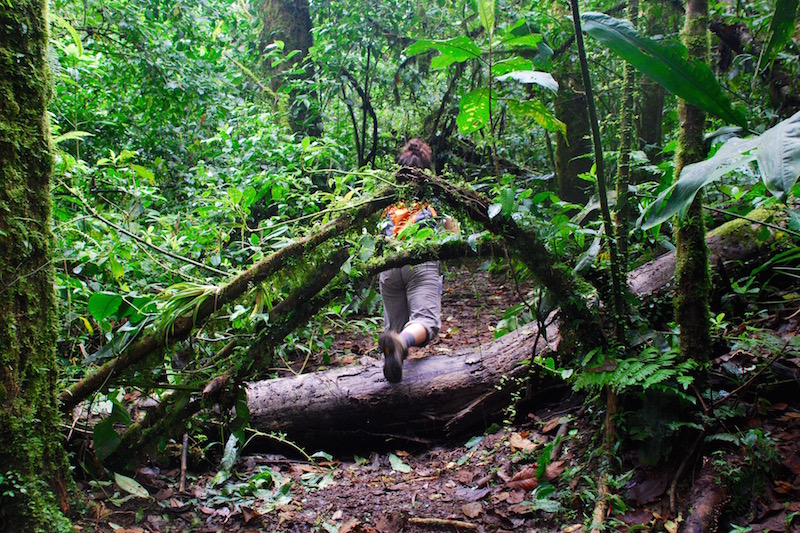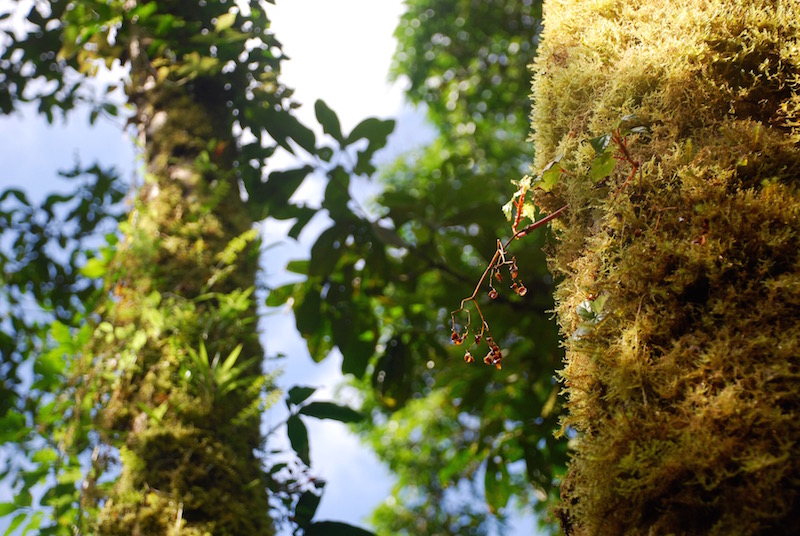
If you’re venturing to Costa Rica, chances are your guidebook pointed you with flapping hands and flashing lights to the cool, verdant paradise known as Monteverde. I love me some Monteverde, but dipping off the beaten path into San Luis adds a whole new and beautiful dimension to a visit to the area. Having lived in this petite place for over two years, San Luis is so special to me that I’ve completely lost the ability to view it impartially. It’s colored by transformative experiences and beautiful relationships I’ve had here – but perhaps that’s not a bad thing. Who would want to visit a place that leaves you feeling indifferent?
My blatant partiality aside, they number few the people who have visited San Luis and not left impressed by its natural beauty, united community, and cultural warmth. Here’s why you should skip Monteverde proper and head to San Luis instead:
- Authenticity. Though beautiful and hospitable, Monteverde has, under the boom of tourism, evolved into a bit of a more commercial destination. San Luis, separated from Monteverde by a 25-minute descent into the valley, combines Monteverde’s rugged, mountainous beauty with the tranquility, warmth, and humility of a town of 400 people, untouched by the fervor of commercialism.
- Community. Spend time talking to anyone in San Luis, and you’ll find out that this community is extraordinarily well-organized. The San Luis Development Association helps coordinate everything from maintenance of the soccer field, cemetery, clinic, and roads, to a rural tourism organization that promotes local businesses.
- Tranquility. San Luis is a town of 400 people. Everyone knows each other, so there’s not much traffic or noise to worry about, aside from a few stray motorcycles.
- Accessibility. I’m not referring to the roads by any stretch of the imagination – buckle up, because San Luis has the same rocky roads that Monteverde is famous for. You’ll want a car here for sure. What I mean is that you can stay in San Luis and devote a day to head up the mountain and experience the highlights of Monteverde. Zipline, see the Monteverde Reserve – check ’em off your list. Then return to San Luis at the end of the day for a quiet, relaxing evening.
Do:
For the outdoor enthusiast, bird watcher, & nature lover:
This family-owned and operated farm boasts beautiful trails that wind through the property, taking you along the river, by pastures, and through thick forest. No stretch trail is the same as another; each twist and turn confronts you with a new lush view, each teeming with life. During the dry season (roughly January – April, inquire for availability), the family builds a swimming hole into the refreshingly cold Rio San Luis – the perfect way to end your hike on a hot day. A campground is also available.
Tip: This is the perfect destination for avid bird watchers. The property is nestled against the back of the Monteverde Reserve and Continental Divide, visitors have the unique opportunity to see both birds typically found on the Pacific Slope of Costa Rica, and birds not typically seen in Monteverde that have drifted over from the Caribbean side. As an added bonus, the Ornate hawk-eagle has been found nesting on the property for several years running.
A fairly recent initiative, the Sendero Pacifico is a network of freely accessible hiking trails that aims to connect the Monteverde Reserve at the the top of the Bellbird Biological Corridor, to the Gulf of Nicoya at the bottom of the corridor. Currently, hikers can choose to complete a day hike in San Luis, or partake in an overnight trek to Guacimal. Whatever length of trail you choose, the views over the valley are stunning. Hikes should be completed with a guide.
The true value of staying at the UGA campus (see “Stay” section below) is the educational activities facilitated by a team of resident naturalists, and included in the nightly lodging rate. Bird-watching, cow-milking, a guided natural history hike, medicinal garden tour, and sustainable farm tour all keep you busy outside, while informational talks and workshops about birds, mammals, insects, plants, and reforestation mean that you’ll come away from your stay a pseudo-expert on the tropical cloud forest.
For the coffee drinker & purveyor of local goods:
- El Cafetal Coffee Tour/Café San Luis. Victor Ramirez has worked in the coffee industry for over two decades, in every aspect from processing to tasting to now growing and roasting his own coffee. A tour through this family-owned farm paints a remarkably detailed picture of how coffee is grown, harvested, roasted, and tasted, and the challenges the crop and farmer face together. Victor’s passion and expertise shine through on this tour, which is perfect for coffee enthusiasts. Coffee available for purchase at the end of the tour.
- Finca La Bella Coffee & Sustainable Farm Tour*. This tour starts at the homes of one of two small-scale family farmers in Finca La Bella. Visitors learn about both coffee and sugar cane cultivation, and lend their own hands to juicing sugar cane. After visiting the farmer, you continue down the road to Finca Bella Tica, where visitors learn about the roasting process and have the opportunity to buy locally-grown coffee.
*This combination tour is arranged through UGA Costa Rica for its guests, though you can visit Finca Bella Tica independently. - Monteverde Natural Cosmetics. This is another truly family-run operation. The Vargas-Torres family produces a line of 100% natural soaps, lotions, and other beauty products, infused with elements found practically in their backyard (like the cascaras of coffee beans or orange peels). The business is run out of a small workshop to the side of the family house, but their products are sold all over Monteverde and Costa Rica at large, and have even found a steady market in China. The family offers tours of their production upon request, which I’d highly recommend if you get the chance. However, the family maintains a busy schedule, so tours are subject to availability. Guests of UGA Costa Rica can contact Reception to check availability.

Dine:
- Rancho de Lelo. Located in Lower San Luis, Rancho de Lelo features tilapia ponds and a small farm from which they harvest their food. In additional to their famous fried tilapia, fished straight from the property’s ponds, friendly owners Lelo & Elvira offer chicken, smoked pork, and vegetarian dishes. Farm tour also available upon request.
- Zelmi’s Pizza. Located on the grounds of Finca Ecológica San Luis, Zelmi’s Pizza is the perfect place to end your hike or swim on the farm. Aside from a variety of pizza offerings, as well as frescos squeezed from fruit grown on the property, a unique charm of the place is Zelmi’s beautiful paintings, which line the walls of the pizzeria.
- Dinner or cooking class with a local family.* Organized for guests of Ecolodge San Luis/UGA Costa Rica Campus, eating dinner or going to a cooking class with a local family allows you to step into an authentic Costa Rican home and share in the food traditions of its inhabitants.
*This tour is arranged through UGA Costa Rica for its guests
Stay:
- University of Georgia-Costa Rica Campus (also known as Ecolodge San Luis). The University of Georgia’s satellite campus in San Luis welcomes visitors who are looking to have an enriching travel experience – travelers who want to connect to and learn from their environment, not just breeze through it. The campus also houses students and researchers, so you never know who you’ll sit next to on the porch or meet at mealtimes. One of the biggest advantages of staying here is the engaging activities that are included in the nightly rate (see “Do” section above), as well as three Costa-Rican style meals a day. Campus staff can help set up your itinerary and make some local reservations.
- Tip: Don’t expect luxury accommodations; rooms are simple but clean. The cabinas are the most private rooms, with small, tranquil balconies with forest views. This will be your favorite spot to sit in the morning, watching troops of monkeys or coatis pass by.
- Rent a house with AirBnb:
- The Leitón’s House – Lovely two-bedroom cabin located in Upper San Luis, well-positioned for those who would like to take advantage of the rural tranquility of San Luis, but with Monteverde a short drive away.
- Casa El Cafetal – As the name implies, this house is set on the grounds of a local coffee farm, owned and operated by the Ramirez family. Located in “middle” San Luis.


































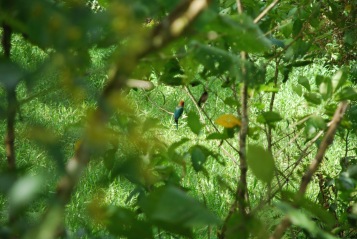







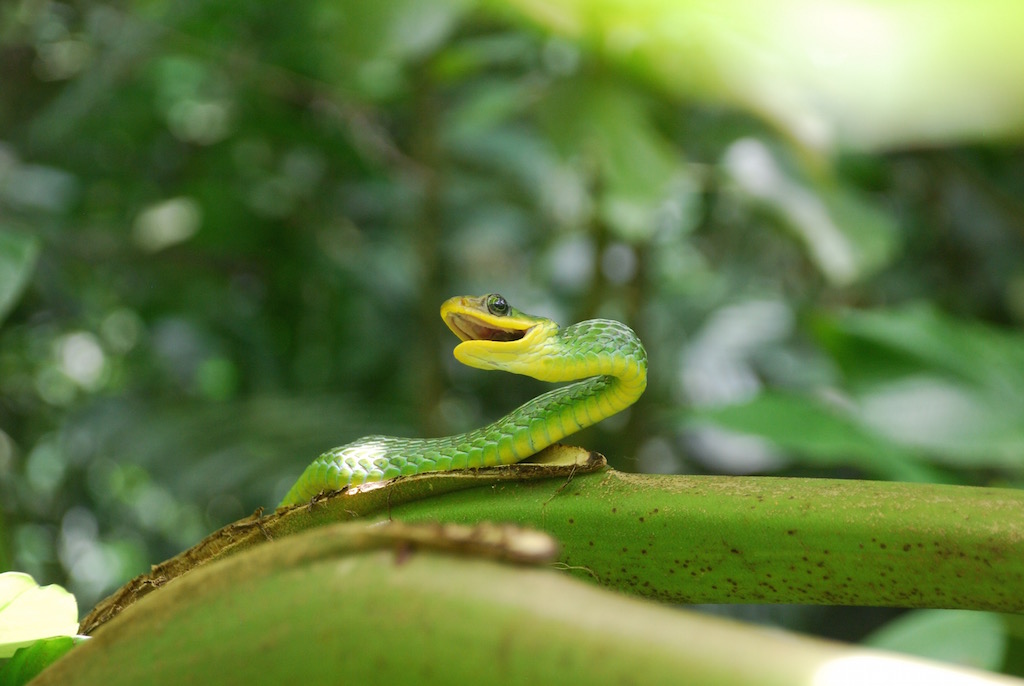
 Growing up, I liked to climb trees. That little extra boost from the ground gave me the ability to spy on my siblings and (supposedly) impress the boys. To me, a few feet above the ground seemed a feat.
Growing up, I liked to climb trees. That little extra boost from the ground gave me the ability to spy on my siblings and (supposedly) impress the boys. To me, a few feet above the ground seemed a feat.


















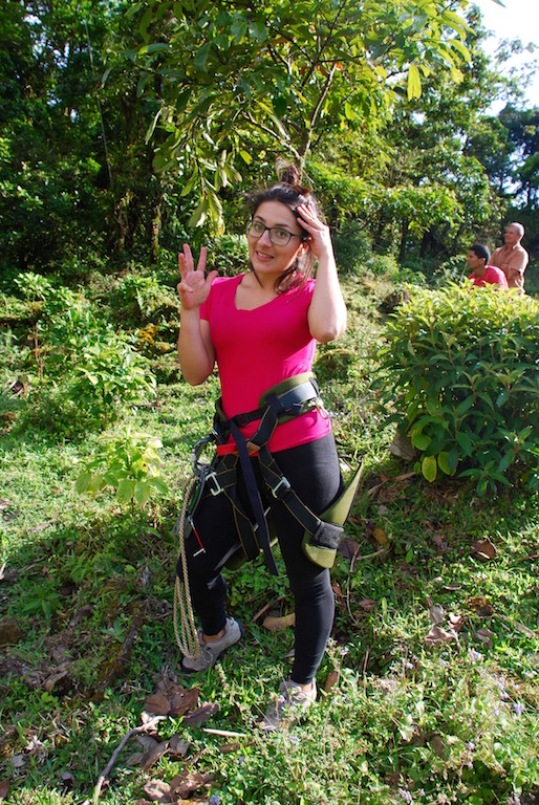
 Experience has taught me never to expect a one-night trip to be relaxing. The logistics are too much, the down time too little.
Experience has taught me never to expect a one-night trip to be relaxing. The logistics are too much, the down time too little.


